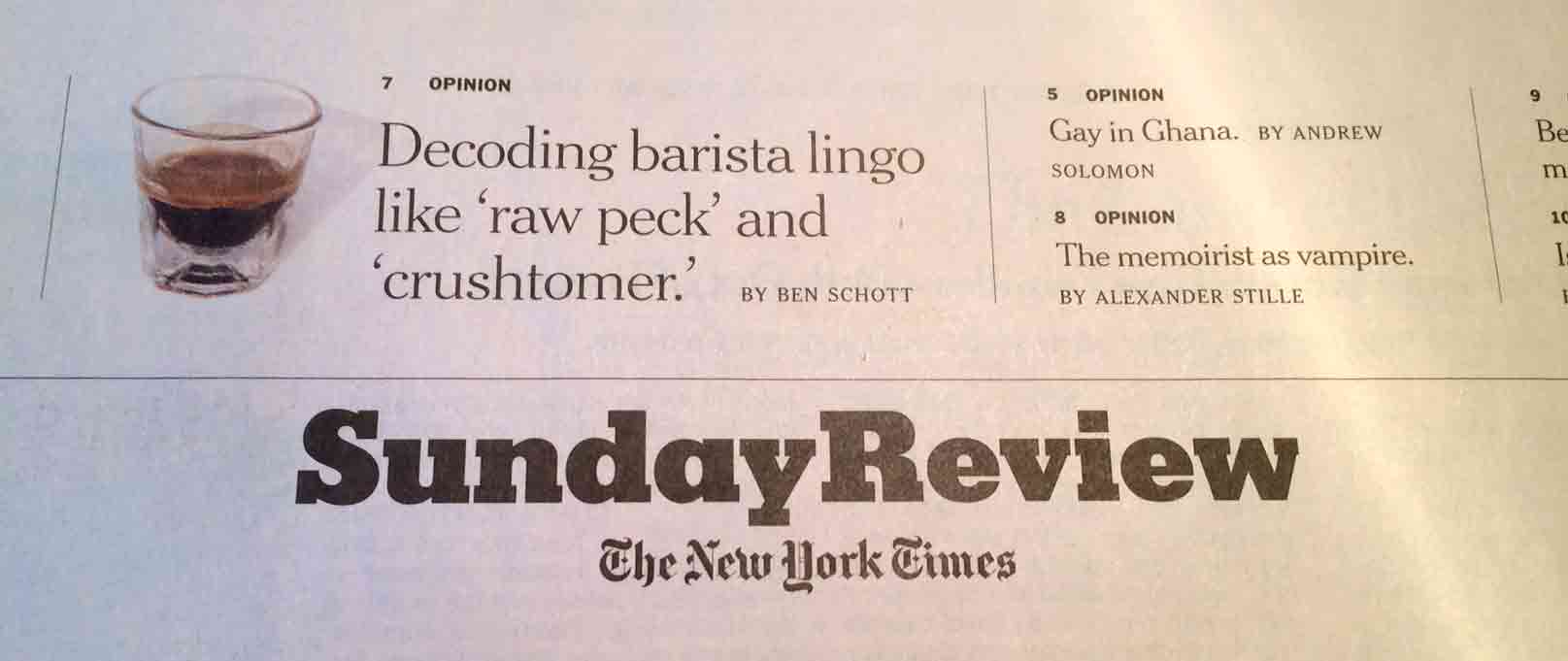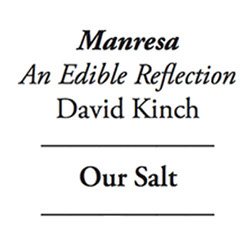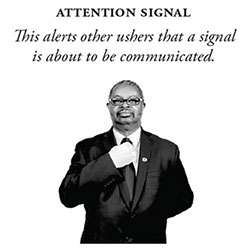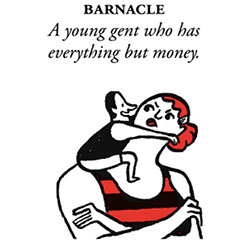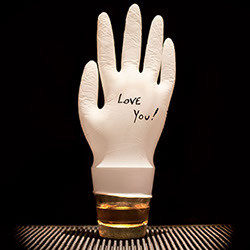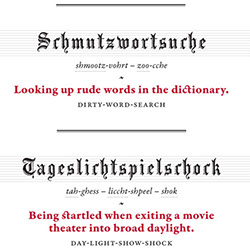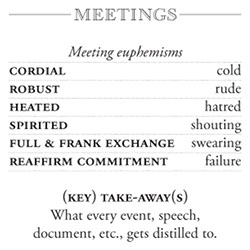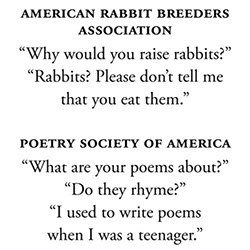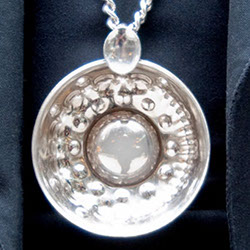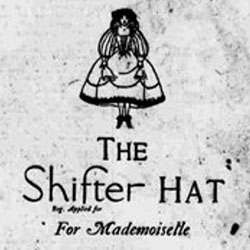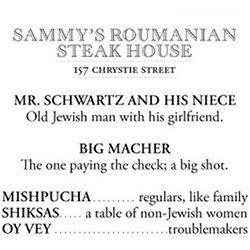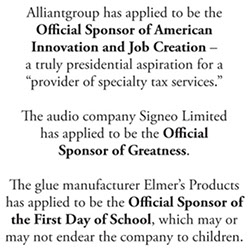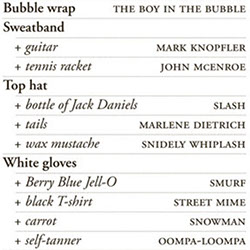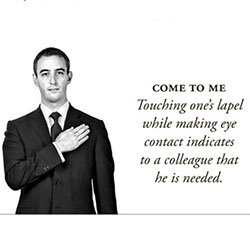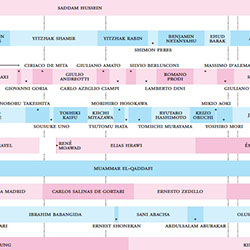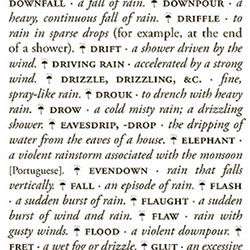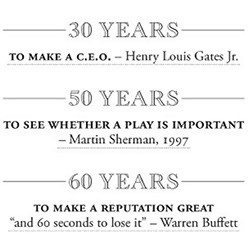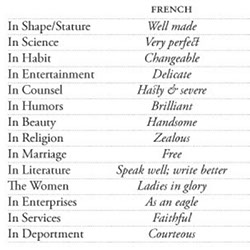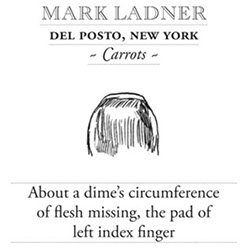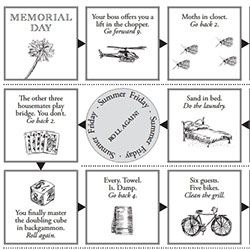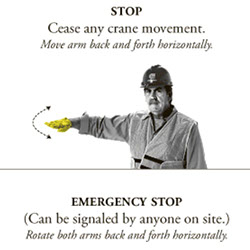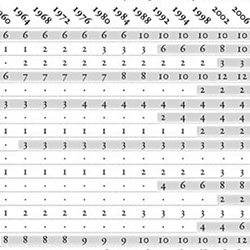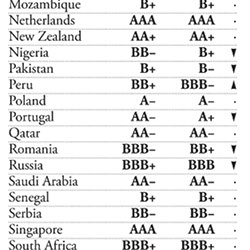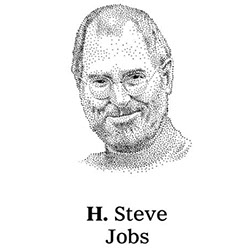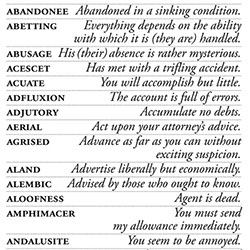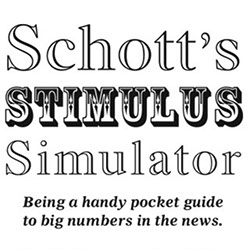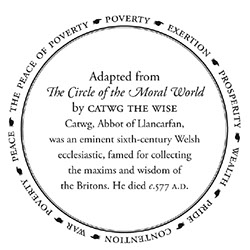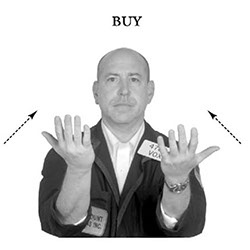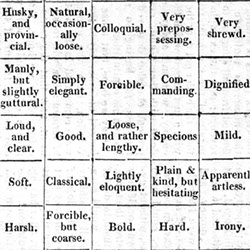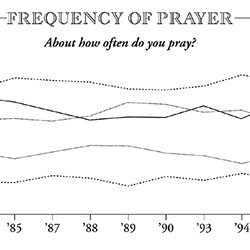Below are some of my pieces for The New York Times
Op-Ed pages – to which I was a Contributing Columnist.
(Parenthetically, as David Shipley noted when he edited the Op-Ed page,
the term “Op-Ed” is not a contraction of “Opinion” and “Editorial,” but a
description of the page’s location in the paper: opposite the Editorial page.)
April 26th, 2015
As restaurant cuisine becomes ever more elaborate, so cookbooks have become increasingly theoretical – at least for us amateurs. Below is a tasting menu compiled from genuine cookbook instructions and ingredients that, we suspect, will never be attempted at home.
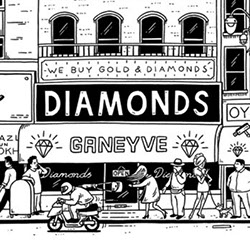 The Secret Slang of the Diamond District
The Secret Slang of the Diamond District
April 26th, 2015
Illustrations by Andrew Rae
The public face of New York’s diamond district is Diamond and Jewelry Way, a block of 47th Street between Fifth and Sixth Avenues lined with dazzlingly lit shops and exchanges and cluttered by hawkers, hustlers, cops and couriers. But beyond these street-level operations, in back rooms, upper floors and looming towers, toils an army of cutters, blockers, polishers, sorters, appraisers, graders, designers and dealers — most of whom the diamond-buying public never sees . . . Or hears.
March 14th, 2015
The secret language of professional dog walkers.
December 29th, 2014
Behold: the ninth annual Op-Ed Quiz. We reckon 60 percent is a good score…
July 20th, 2014
Ushers perform a central ministry in churches of all denominations. They welcome, seat and assist congregants, helping to create an environment conducive to worship. Often following in the footsteps of their parents, ushers are guided by Psalm 84:10: “I had rather be a doorkeeper in the house of my God, than to dwell in the tents of wickedness.” Many ushers communicate during services using a sequence of hand signals called the “National Silent Uniform System.” Devised by George T. Grier in the 1940s, these signals have gradually evolved. And they are still taught to hundreds of volunteers each year by the National United Church Ushers Association of America, which, this week, holds its 95th convention. Shown are the (simplified) central elements of some of the N.U.C.U.A.A. hand signals.
July 4th, 2014
With illustrations by Eleanor Davis
In the summer of 1922, a number of newspapers printed an anonymous lexicon of beach slang in vogue with “the shifters, flappers, cake eaters and puddle jumpers . . . down at the shore.” (In reality it’s possible that many of these terms were exuberant inventions.) We reproduce this vocabulary in the hope that it will be heard once again along the water’s edge.
April 14th, 2014
Real estate is often assessed by comparing cost per square foot. But there are other ways to visualize price disparities. This Op-Ed shows the actual floor space $1 will buy in a range of neighborhoods across America: a cut-out-and-keep guide to the property divide.
February 16th, 2014
The secret vocabulary of New York’s finest drinking establishments.
December 26th, 2013
Oh, the news out there is frightful,
But a quiz is so delightful,
So to test what you think you know,
Have a go, have a go, have a go.
October 13, 2013
An excerpt from my new book, “Schottenfreude: German Words for the Human Condition.”
With bonus audio!
September 8th, 2013
A glossary of “Inside the Beltway” vocabulary.
With Mark Leibovich (author of “This Town")
August 4, 2013
Like a moth to flame, small talk is drawn to the inevitable question, “So, what do you do?” This innocent inquiry heralds a timeless conversational dance: Person A states a job and Person B flips through his or her mental Rolodex for an apposite question or comment. Shown are some responses that professional associations report their members often hear.
February 24, 2013
The blurb at the bottom of a movie poster is called the “billing block.” And while it might look like a bar code of haphazardly packed type, it is in fact the product of detailed legal agreements and intense contract negotiation. Shown in the piece is the billing block for a fictional film – “All the Presidents” – and an explanation of how it was constructed.
February 9, 2013
By now, we’re all fluent in the language of corporate coffee – from Dunkaccinos ® to Caffè Vanilla Frappuccinos ®. But across America, independent coffee bars have developed private vocabularies to describe the intricate beverages they brew and the idiosyncrasies of those who order them.
December 27, 2012
If, as Soren Kierkegaard believed, life is best understood backward, then the holidays are an ideal time to attempt to unravel the secrets of our age through an end-of-the-year quiz. Below are more than a hundred questions to ponder over a cup of coffee, with your feet up. For, as Kierkegaard also knew, “Far from idleness being the root of all evil, it is rather the only true good.”
December 23, 2012
Sommeliers are on the front line of customer service and profit generation in first-class restaurants where the price of a bottle of wine can easily dwarf any sum spent on food. We share the secret language of some of New York’s finest “Somms.”
November 30, 2012
For a few months in 1922, throngs of America’s youth — from schoolkids to shopgirls — were swept up in a leaderless pyramid scheme that promised “something for nothing” and encouraged promiscuous flirtation. These were the “Shifters.” This is their (brief) story.
September 8, 2012
A comprehensive explainer of New York Fashion Week – from the scheduling and structure of the shows, through to the lenses used by the “pit” photographers.
August 6, 2012
Ever wondered how restaurant staff members communicate with one another? Or why some diners have curious letters appended to their reservations? In the first of a new series on private languages, we offer a selection of secret codes used in the dining rooms and in the kitchens of some of New York’s finest establishments.
July 27, 2012
The draconian licensing rules associated with the London Olympics have prompted a flurry of news articles involving trademarks, from the Olympic Cafe that had to paint over its initial “O” to the butcher who was forced to remove a sign with sausages arranged into the Olympic rings.
Trademarking is, of course, a key element of brand protection. But companies are increasingly keen to control the rights to general concepts and abstract nouns. It seems as if you can’t enjoy summer, celebrate a birthday or take a nap without tacitly supporting (or accidentally infringing) some corporation’s trademark. In this piece are some of the “official” sponsorship trademarks currently approved by the United States Patent and Trademark Office, as well as those with applications pending, and others that have been abandoned over the years.
December 29, 2011
Like a circle in a spiral, like a wheel within a wheel, never-ending news is spooling off a never-ending reel … Now a quiz is set to test you and your memory of the memes … like the stories that you find, in the pages of The Times.
October 28, 2011
A guide to Allhallows Eve outfits that can be fashioned from items easily found around the home or office.
With Tad Low
October 1, 2011
In 1944, Alfred Eisenstaedt shot a photo essay for Life magazine, depicting the secret hand signals Sherman Billingsley used to communicate with the staff of his famous nightspot, the Stork Club. More than 45 years after the Stork Club shut, its tradition of discreet communication lives on. The award-winning New York restaurant Eleven Madison Park has a range of subtle signals to smooth the experience of its clientele. These signals, used by all members of the dining room staff, are demonstrated by the restaurant’s general manager, Will Guidara.
May 21, 2011
“The purpose of foreign policy,” argued John F. Kennedy, “is not to provide an outlet for our own sentiments of hope or indignation; it is to shape real events in a real world.” And the real world is populated by other leaders, each with their own competing hopes and indignations. Click above for the actors who, since Jimmy Carter, have strutted and fretted their hour upon the world stage.
April 3, 2011
“April showers bring forth May flowers” – that much is uncontested. But the variety of wet weather with which spring confronts us would test even an Eskimo’s powers of description. To aid the discussion of precipitation, we present some of pluvial terms to be found in the inestimable “Oxford English Dictionary.”
January 29, 2011
In his State of the Union address, President Obama challenged America to look ahead to “what the next big industry will be or where the new jobs will come from” – noting that “30 years ago, we couldn’t know that something called the Internet would lead to an economic revolution.” With Mr. Obama’s injunction in mind, we look at how long real change actually takes.
January 18, 2011
Mark Twain observed: “One speaks of French vivacity and German gravity and English stubbornness. There is no American temperament. The nearest that one can come at it is to say there are two — the composed northern and the impetuous southern; and both are found in other countries.” (The only unifying American characteristic, according to Twain, was “the national devotion to ice water.”) With Twain’s words in mind, we present a glossary of arcane national caricatures from writers curiously fascinated with difference.
29 December, 2010
Should old news items be forgot, and never brought to mind? Of course not! As the year draws to a close, we present 100 or so questions to test your recollection of the highs and lows of 2010 — for the sake of auld lang syne.
October 11, 2010
with Leanne Shapton
A culinary Op-Art which charts the battle scars a baker’s dozen of top chefs have received in the line of service.
The chefs are: Mark Ladner, Harold Dieterle, Michael Laiskonis, Sean Rembold, Paula Deen, Johnny Iuzzini, Anita Lo, Dominique Crenn, Hugh Acheson, Andrew Carmellini, Tim Love, Marcus Samuelsson and Dan Barber.
August 13, 2010
with Leanne Shapton
Armed with wine corks, bottle caps and seashells, can you make it from Memorial Day to Labor Day with your dignity and deposit intact
June 11, 2010
An almanac of facts and statistics pertaining to the soccer World Cup in South Africa.
May 30th, 2010
Since the 1930s, construction workers called flaggers or signalers have used a private vocabulary of hand signals to communicate from the ground with crane operators. These hand signals ensure that loads are maneuvered, sometimes at dizzying heights, with all due regard for the safety of pedestrians, workers and cargo. This July, the Occupational Safety and Health Administration is set to issue revised regulations for crane operations — which may include changes to the way signalers are trained and certified. Kevin McGuire, a master rigger who has worked for Con Edison for 38 years, offers a guide to what aspiring flaggers need to know.
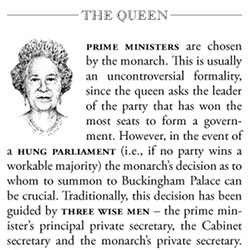 British General Election Briefing
British General Election Briefing
April 18, 2010
Last Thursday’s televised party leaders’ debate – the first in British history – injected new energy into a lackluster election campaign. The incumbent prime minister, Gordon Brown of the Labour Party, still faces a tough fight from his Conservative opponent, David Cameron – though with the polls swinging toward the third-party Liberal Democrats there is the real possibility of a “hung Parliament.” ¶ If Americans sometimes find their electoral-college math baffling, the vagaries of Britain’s unwritten constitution are even more rococo. Illustrated are some oddities of British electoral tradition.
 On the Timing & Duration of Sleep
On the Timing & Duration of Sleep
February 26, 2010
A collection of proverbs, advice and facts to introduce All-Nighters – a new Opinionator series that explores the habits and troubles of sleep.
February 12, 2010
Being a collection of statistical curiosities pertaining to the Winter Olympics.
February 3, 2010
Countries, like individuals and corporations, have credit ratings. These ratings offer forward-looking opinions about risk — will a country be able to pay back its debts in full and on time? Lenders pay close attention to nations’ credit scores. Indeed, some banks and investment organizations are prohibited from lending to countries with all but the best ratings. The creditworthiness of entire countries has become increasingly thorny as governments around the world face tough choices about how much money to borrow (or print) to secure their economies. For example, it is currently considered less risky to lend to McDonald’s than to Brazil. Click here to see the credit rating definitions used by the agency Standard & Poor’s, as well as S&P’s rating of a range of countries, and the 50 states.
December 30, 2009
William Shakespeare famously warned, “If all the year were playing holidays, to sport would be as tedious as to work.” With that in mind, the Opinion section presents a little light labor to ease the terrible burden of this holiday season. Click here for 100 or so questions on the personalities and happenings that defined 2009 — from geopolitics and gossip to commerce and celebrity.
December 14, 2009
The Beatles released “When I’m 64” in 1967, when life expectancy in America was 67 for men and 74 for women. Nowadays, men can expect to live to 75 and women to 80. The song poses a series of questions about the lives and loves of older people, some of which have recently been answered by data from the National Social Life, Health and Aging Project – an exploration of the interactions among health, cognitive function, emotional well-being and social connectedness of Americans aged 57–85. As the year comes to a close, and many people contemplate the passing of time, this Op-Ed presents a selection of findings from the study.
 On the Division of Our Three Score & Ten
On the Division of Our Three Score & Ten
October 19, 2009
A paper published this month in The Lancet predicted that at least half of all babies born in America in 2007 will live to the age of 104. Researchers at the Danish Aging Research Center at the University of Southern Denmark suggested that those born in developed countries could now be considered to have four stages of life — child, adult, young old age and old old age. This piece tabulates some of the many other divisions of mankind’s lifespan, proposed by a variety of writers – from Hippocrates to A. A. Gill.
August 3, 2009
The 140-character limit of Twitter posts was guided by the 160-character limit established by the developers of SMS. However, there is nothing new about new technology imposing restrictions on articulation. During the late 19th-century telegraphy boom, some carriers charged extra for words longer than 15 characters and for messages longer than 10 words. Thus, the cheapest telegram was often limited to 150 characters. Concerns for economy, as well as a desire for secrecy, fueled a boom in telegraphic code books that reduced both common and complex phrases into single words. Dozens of different codes were published; many catered to specific occupations and all promised efficiency. The phrases below are from the third edition of “The Anglo-American Telegraphic Code,” published in 1891. It can only be hoped that, as Twitter advances, more people will begin Tweeting in code, thus …
March 31, 2009
Being a handy pocket guide to big numbers in the news.
December 31, 2008
“Time has no divisions to mark its passage,” Thomas Mann observed. “There is never a thunderstorm or blare of trumpets to announce the beginning of a new month or year. Even when a new century begins it is only we mortals who ring bells and fire off pistols.” And it is only we mortals who publish quizzes.
December 20, 2008
A Times editorial on Aug. 1, 1968, declared: “Public opinion polls possess the fascination inherent in any attempt to read the future. But in fact they are a reasonably trustworthy guide only to the past.” With this in mind, we look back four decades to the opinion polls of 1968 – a year dominated by an unpopular war, racial tensions, economic unease and a presidential election upon which much would hang. Sound familiar?
December 1, 2008
Being a collection of proverbs, saws, and wisdom for this testing financial climate.
August 8, 2008
The number eight rarely receives the same attention as one, three, seven or nine, which for various reasons tend to hog the numerical limelight. Yet eight is not without merit, and today, 8/8/08, seems an ideal opportunity to highlight some notable miscellaneous octads.
April 7, 2008
An oil trader, Ray Carbone, demonstrates the hand signals used on the floor of the New York Mercantile Exchange.
February 14, 2008
December 30, 2007
There is, we have it on ecclesiastical authority, a “time to every purpose under the heaven.” “A time to be born, and a time to die; a time to plant, and a time to pluck up that which is planted.” Indeed, for those vacationing near a beach, there is even “a time to cast away stones, and a time to gather stones together.” (And for those considering a run for the presidency, “a time to keep silence, and a time to speak.”) As 2007 draws to a close, however, it is time to cast our mind back to the incidents and accidents, alarums and excursions that populated the year. This is a test. No conferring. Well, perhaps a little.
November 15, 2007
with David Brooks
A subjective look at the gifts and deficits of the 2008 presidential hopefuls.
February 25, 2007
In Alan J. Pakula’s 1974 film “The Parallax View,” the nefarious Parallax Corporation uses a questionnaire to recruit potential assassins. Sociopaths and psychopaths are weeded in with a battery of questions that expose their psychological strengths and weaknesses, secrets and predilections. At the opposite end of the moral spectrum, and with utterly benign intent, the General Social Survey has been performing a similar exploration of the American psyche for 34 years.
December 31, 2006
The writer Ben Hecht once observed that trying to determine what is going on in the world by reading newspapers is like trying to tell time by watching the second hand of a clock. Still, some of what showed up on the news radar during the past 31,536,000 (or so) seconds must have seeped in, right? Well, let’s see. Traversing the altitude of brows from high to low, the following 100 questions relate to the people, events and places of significance or curiosity in 2006. Take the test — and see how closely you’ve been paying attention.
September 7, 2006
It’s been nearly five years since 9/11, but it seems like a lifetime. Certainly, a lifetime’s worth of events for America and the world — elections and insurgencies, hurricanes and tsunamis, attacks and threats of attack — have unfolded with such speed that it can be hard to sort through, or even recall, everything of consequence. The chart below is an attempt, admittedly selective and incomplete, to survey the first five years of our post-9/11 world — a world that is certainly new, though not always brave.
